Toronto Biennial of Art or TBA, currently in its second edition, is a city-wide event that features the works of artists from across the globe. It opened on March 26, 2022 and will remain on view until June 5, 2022. The art fair, themed ‘What Water Knows, The Land Remembers’, serves as an ode to the layered narratives and ecologies that have blessed the land in and around Toronto. The 72-day event will witness several exhibitions, programs, guided walks, artist talks, storytelling sessions and performances. 70 participants from 18 countries will showcase a retinue of work that has been developed in response to the theme of the fair. "Having postponed our event by six months, we are eager to invite our local audiences and communities back, and excited to once again welcome the world to Toronto this spring to experience ambitious contemporary art by among the most compelling artists working today,” says the founder and executive director of TBA, Patrizia Libralato.
The art event serves to establish new kinships and deepen the older ones between the curators, collaborators, artists and visitors. The location of the second edition of the event has been moved inland from the shoreline of Lake Ontario, following the literal and hidden tributaries, almost as a poetic stance. Most of the exhibitions will be held at two main venues, namely, the 72 Perth Avenue in the Junction neighbourhood and the Small Arms Inspection Building, located near Mississauga. “Our curatorial team has expanded on the themes of the 2019 Biennial to create a second edition that speaks directly to many facets of Toronto’s history, geography, and culture that inform what our city is today,” shares Libralato.

Launched in 2019, the Toronto Biennial of Art is a visual arts event that focuses on showcasing contemporary art and artists from across the globe. Held every two years, the event is spread across the city and serves to transform the region with public exhibitions, performances and learning opportunities. With a motto to further a tradition of inclusivity and diversity in contemporary spaces, it engages the diverse local communities and contexts and encourages conversations that seek to find the position of local offerings in the larger global community.
Some of the events that were held during the opening week of the second edition of the fair include ‘Terrakota Route’, ‘kwe’é díí shighan ńt’ęę́ ́, I wonder what this Key opens now?’, ‘Being Future Beings’ and ‘Abolition Is Love: How to Live Abolition in Everyday Life’. All the events were as distinct and layered as their names and titles. “Through storytelling sessions, conversations, performances, workshops, and walks, Biennial Programs invite communities to gather and learn together in different formats and engage deeply with artists’ works and practices,” mentions Patrizia Libralato in a statement.
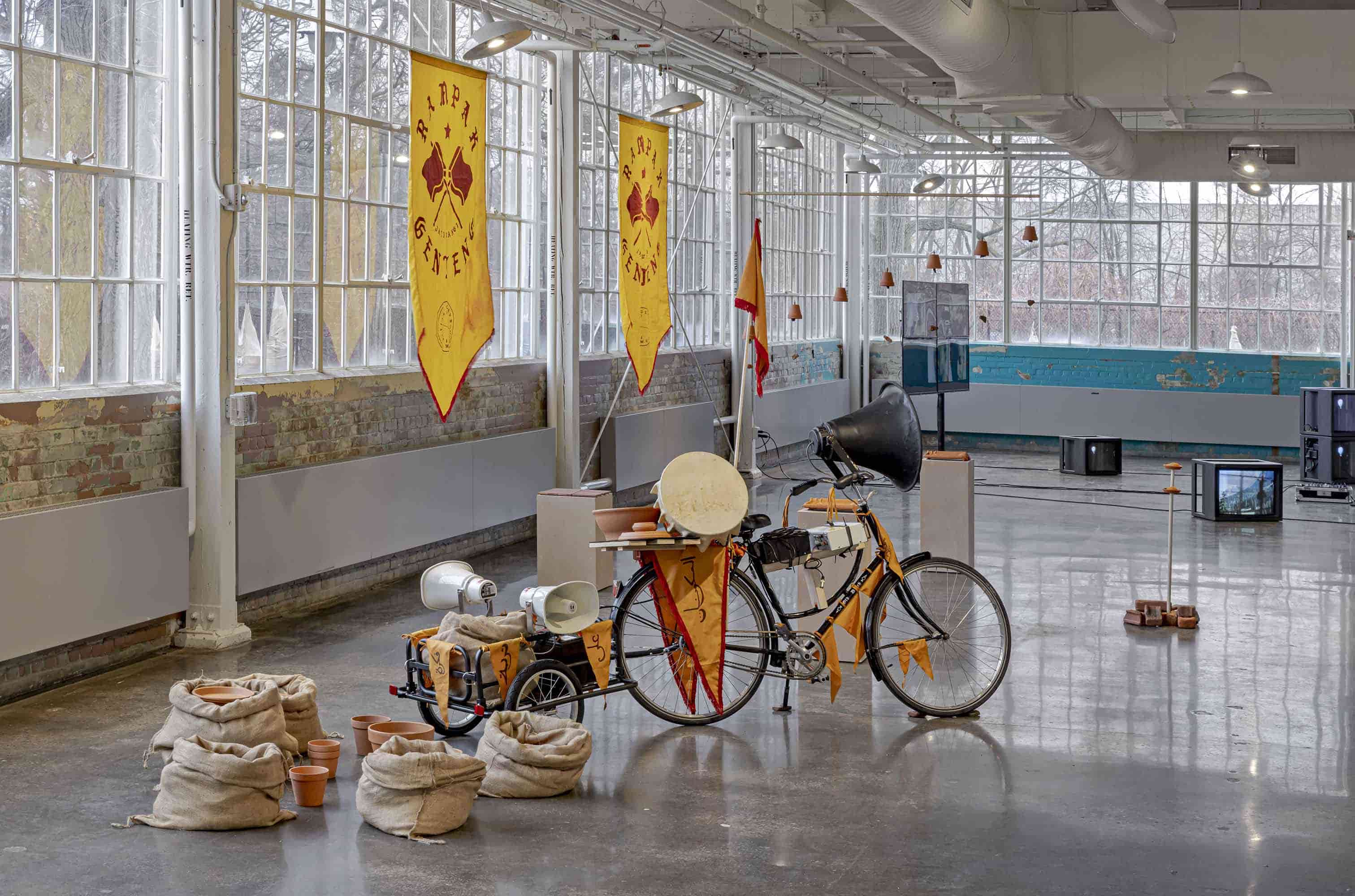
‘Terrakota Route’ by Jatiwangi art Factory or JaF, an Indonesian collective of musicians, designers, curators and multimedia artists, is a mobile multimedia performance comprising original music and performances. The collective pays special attention to their local rural life as part of their artistic practice, the impact and influence of which can be witnessed in their work. The terracotta industry in the Jatiwangi district in Indonesia, which is central to both their artistic and cultural activities, also served as an inspiration for their recent act. Clay from the terracotta industry was used to fashion the instruments used by LAIR, the music ensemble of the collective. The act also served to reference an Indonesian practice, which involves playing “obrog-obrog'' each morning throughout the village of Jatisura in West Java, to mark the hour of fasting during Ramadan.
American artist Eric-Paul Riege’s ‘kwe’é díí shighan ńt’ęę́ ́, I wonder what this Key opens now?’, a durational performance by the fibre artist, was created in response to one of his previous installations ‘home for Her’, which is made out of a series of looms and blankets constructed in the shape of his childhood home. The artist, dressed in costumes made by hand, transformed himself into a walking and talking sculptural piece. Dressed in his eccentric clothing, he moved around the spaces of the gallery, sometimes interacting with his static installation, sometimes serving as a spectacle all by himself. His performance derived references from the Hózhó-Diné philosophy and cosmology and served to honour archaic spirituality and knowledge.
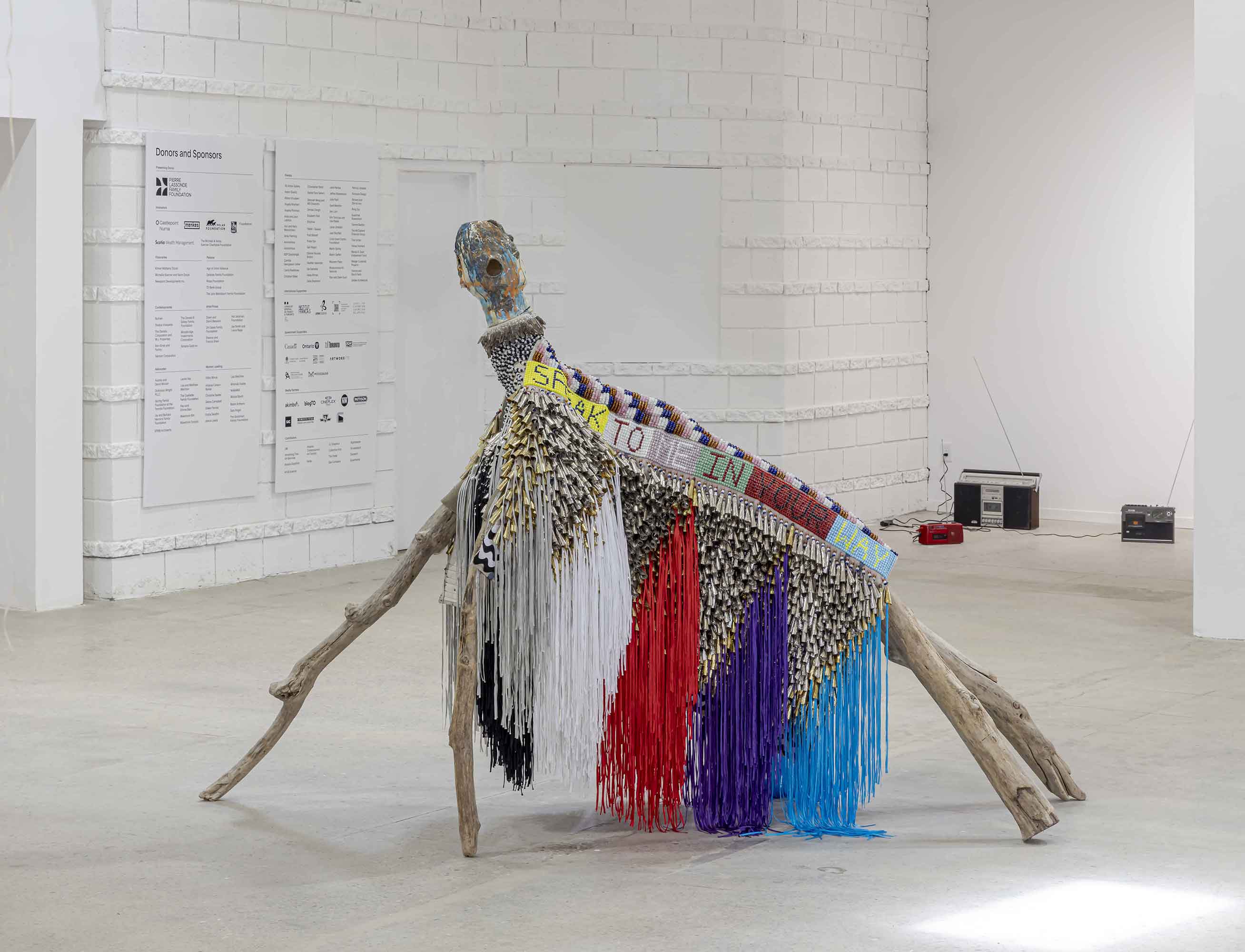
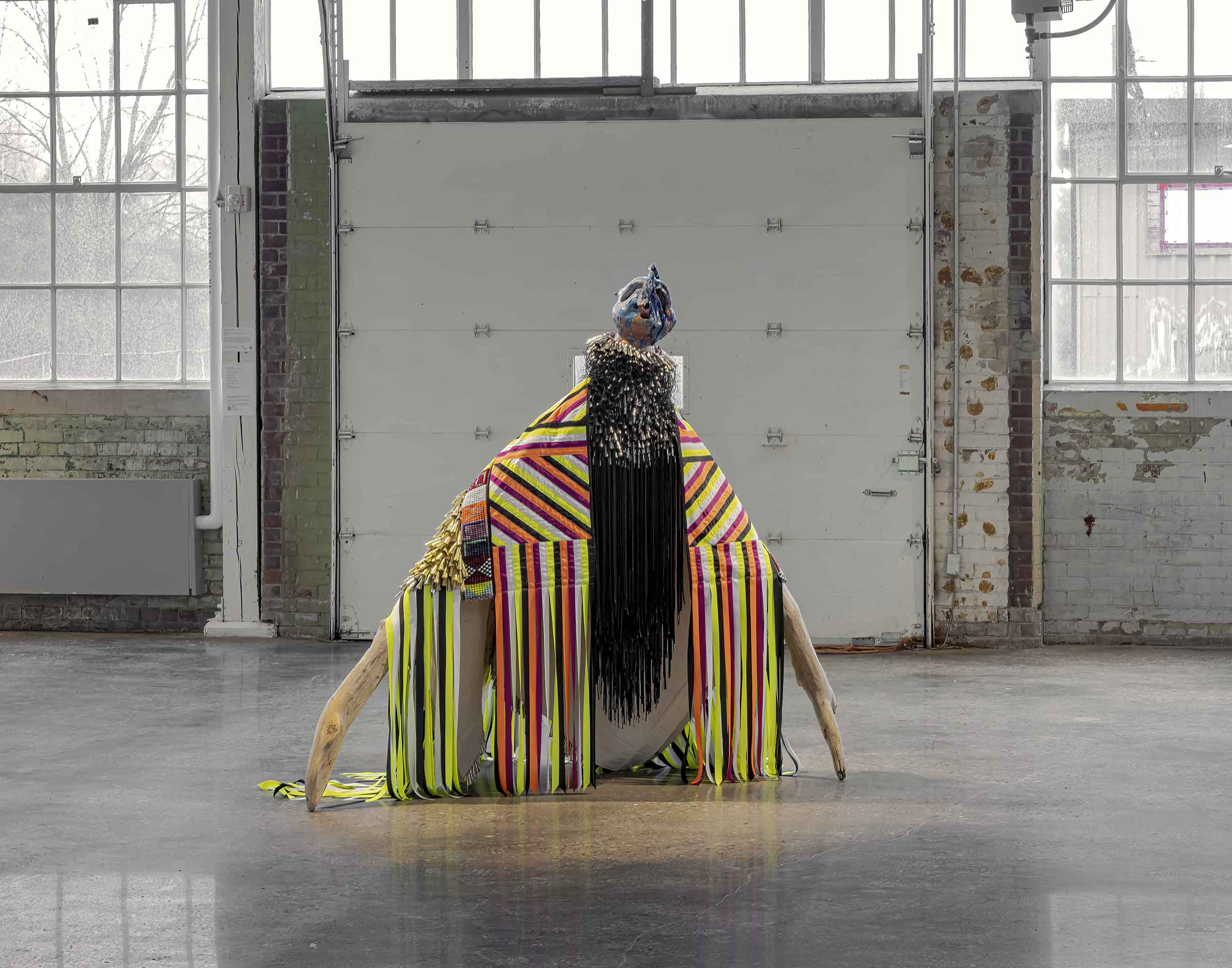
‘Being Future Beings’, a performance art piece directed by choreographer and artist Emily Johnson was developed by her in response to another Biennial exhibition, ‘I AM YOUR RELATIVE’ by Jeffrey Gibson, which comprised a series of moveable stages that could serve to host the performances of several artists, in addition to talks, workshops and informal gatherings. Some of Gibson’s other works displayed at the event include ‘In All You Took, I Gladly Gave’, ‘SPEAK TO ME IN YOUR WAY SO I CAN HEAR YOU’, and ‘ALL FOR ONE, ONE FOR ALL’. His artistic creations reference various aesthetic and material histories that are rooted in the indigenous cultures of America as well as other contemporary subcultures. Known for creating visually rich sculptures and paintings, Gibson made use of various found and repurposed materials and objects like tipi poles, wool, canvas and driftwood to sculpt the creations exhibited at the event. These elemental objects come together to form cohesive artefacts that reference indigenous objects and materiality. The juxtaposition of bright colours, bold shapes and myriad textures in his art installation ‘ALL FOR ONE ONE FOR ALL’ was born out of the artist’s attempt to explore pre-Columbian ceramic heads.
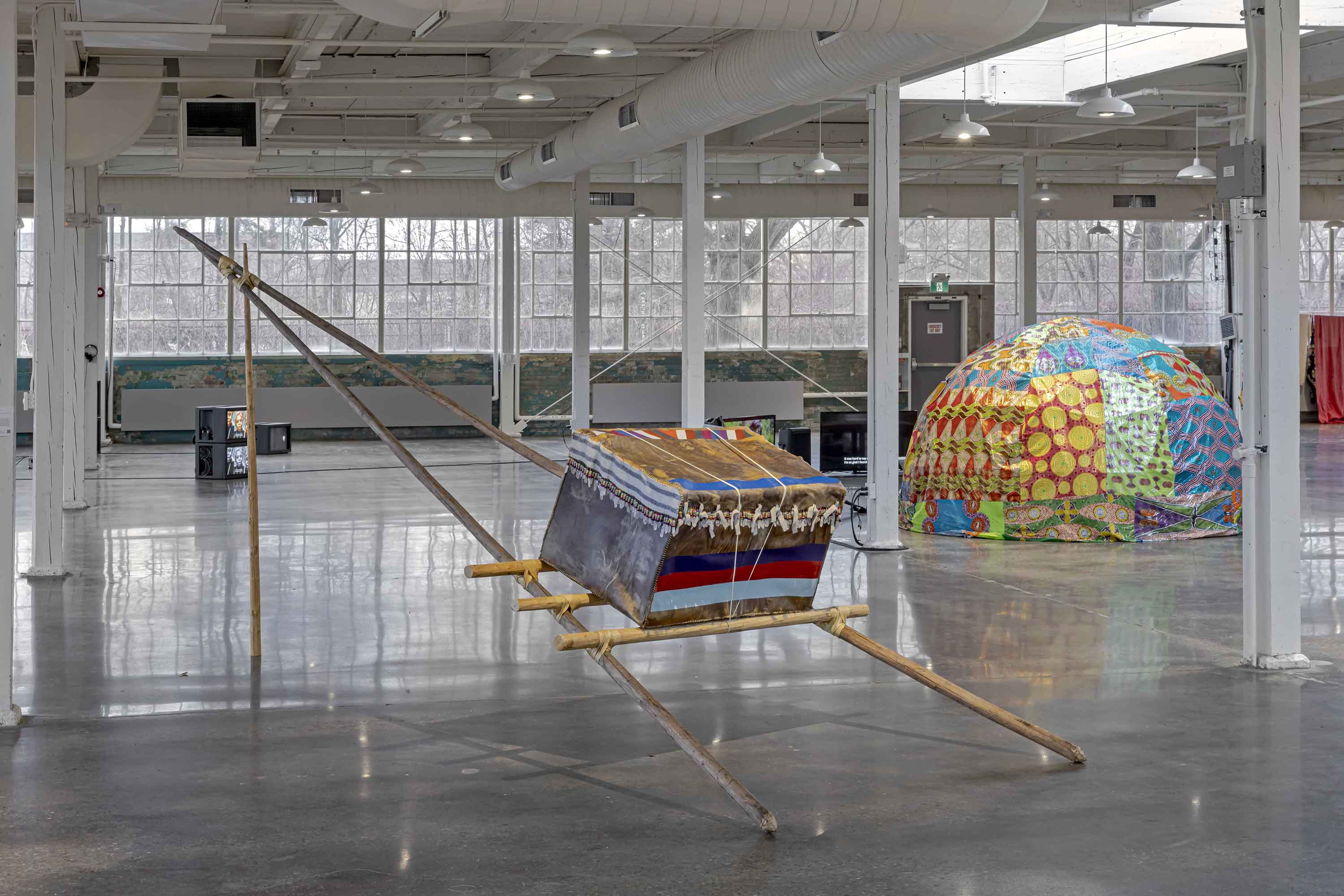

Another inaugural showcase, namely ‘Abolition Is Love: How to Live Abolition in Everyday Life’, born out of the collaboration of three individuals: artist Syrus Marcus Ware, academic Giselle Dias and activist and writer Sandy Hudson, served the purpose of offering insights into building abolitionist communities that are rooted in care, social justice and inclusive future planning.
Additionally, Syrus Marcus Ware, who dons the hat of a scholar, visual artist, activist, curator and educator, will also exhibit another showcase, namely ‘MBL: Freedom’ at the event. The exhibit is a continuation of his multi-year project that was developed in response to the Antarctic Treaty System. Born as an attempt to imagine a future where Antarctica is the only habitable place on earth, he creates narratives through mixed-media installations. After his 2019 showcase that comprised soft sculptures, video installations, drawings and live performances, he has returned this year with the next chapter of his story which will be showcased to audiences on a campsite. The experience will also include discussions on abolitionist futures, revolutionary struggle and disability justice.
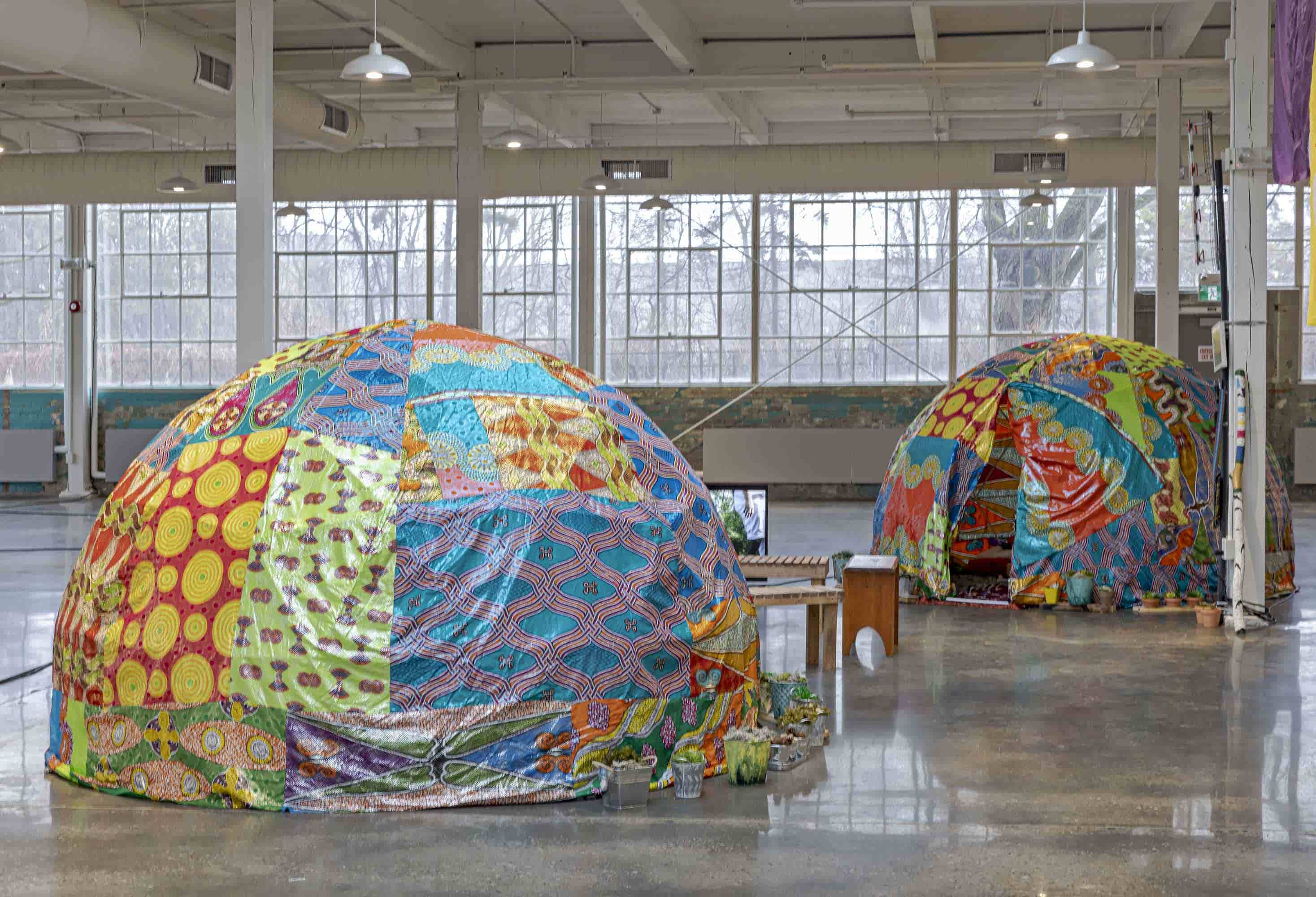

The opening event on March 25 was also marked by the felicitation of the Biennial Artist Prize Recipient, Camille Turner. On winning the award at the Biennial opening event on March 25, Turner said ''I am so thrilled to be the recipient of this prize! This artwork is dedicated to ancestors known and unknown and I want to thank my amazing dream team.” Turner’s showcase ‘Following the Afronautic Trail’ invited participants on a two-day exploration where they could explore different sites and monuments near University of Toronto’s campus. These walks were accompanied by visual and textual prompts that served as guides. Later, the participants were ushered to the university campus into a futuristic reading room designed by Turner, where archival resources could be investigated. The participants then had the chance to revisit the prompts in a new context, thus enabling them to establish connections between the past and present.

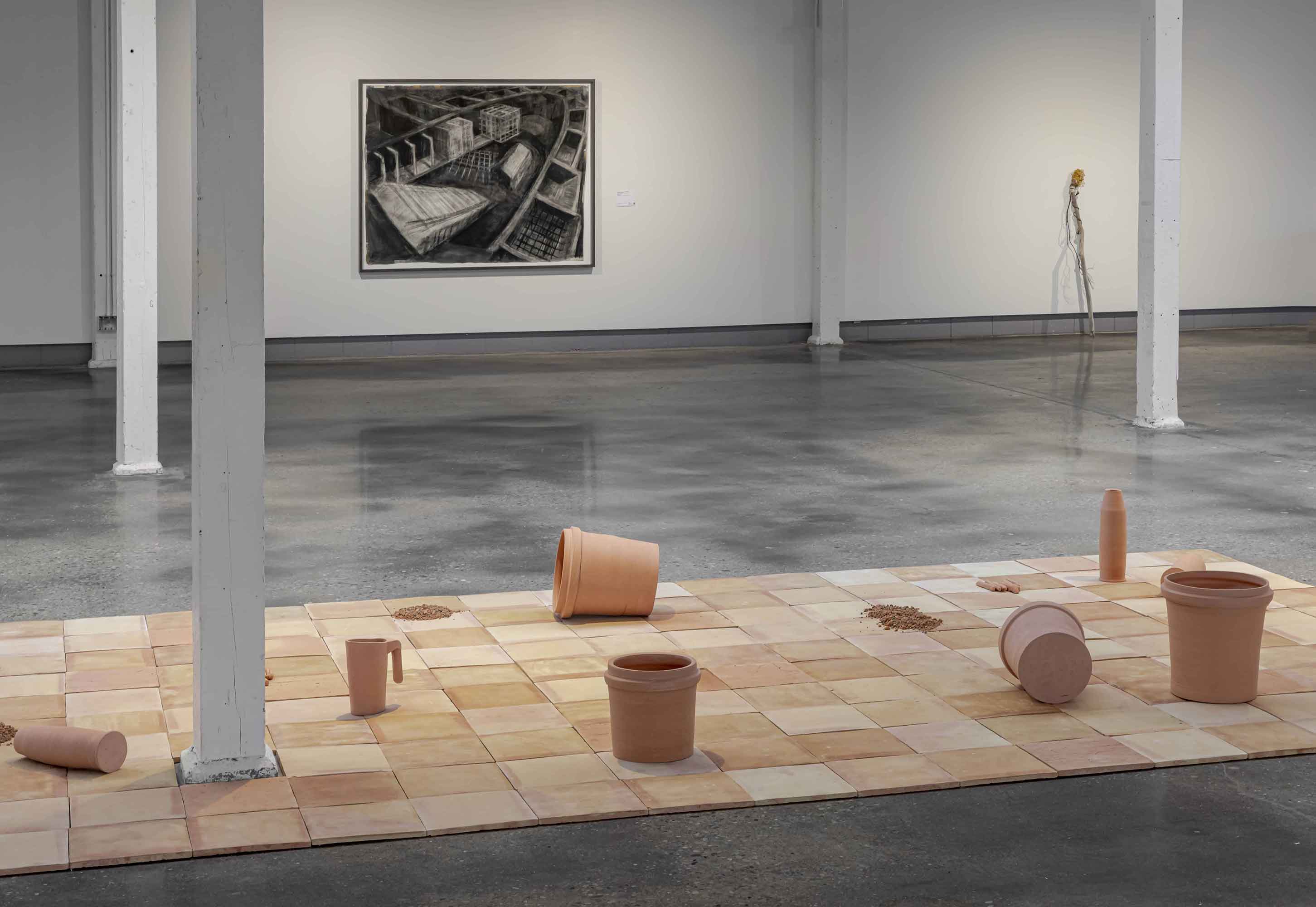
The month of April will witness another round of showcases by people from various professional backgrounds and varied ethnicities. Some of the events scheduled for April include an artists’ talk ‘Babaylans and Encanadores: A Conversation with Paul Pfeiffer, Stephanie Comilang, and Simon Speiser’, a workshop ‘C Magazine Workshops with Erika DeFrietas, Jess Dobkin, and Francisco-Fernando Granados’, and ‘Storytelling Sessions with Jeffrey Canton, Melissa Davidson, Emily DiCarlo, Iwrds Duniam, Nicole Markland’. After the disconnect between people in the last two years, these physical outdoor and indoor events that encourage participation are an efficient way to re-establish lost connections.


Japanese artist and composer Aki Onda will showcase ‘Nam June’s Spirit Was Speaking to Me’, a project that was initiated by him unintentionally in 2010, when he was listening to a handheld radio and happened to listen to something that he surmised was a transmission by late artist and composer Nam June Paik. Onda took this as an invitation to begin work on a project where he would conjure music via radio waves. He immersed himself in the artist’s archival materials and artworks and over the years, adopted the traditions and practices of the late artist and created showcases that interact with older technologies and reference his mentors.
Visual artist and writer, Andrea Carlson’s ‘Never Ending Monument’ is a rather simplistic sculptural installation that appears like the 3D version of her drawings. They remind viewers of the “Man Mound”, which is a 214-foot-tall ancient earthwork located in Wisconsin. Carlson derives inspiration from the now fractured effigy and projects this in her work. As the only remaining anthropomorphic effigy mound in the United States, it serves as a symbol of the latent connection between the natural and supernatural world. Carlson’s sculptures are presented in such a manner that they can be viewed from all directions and the view from every direction produces a different perspective, much like the original effigies.
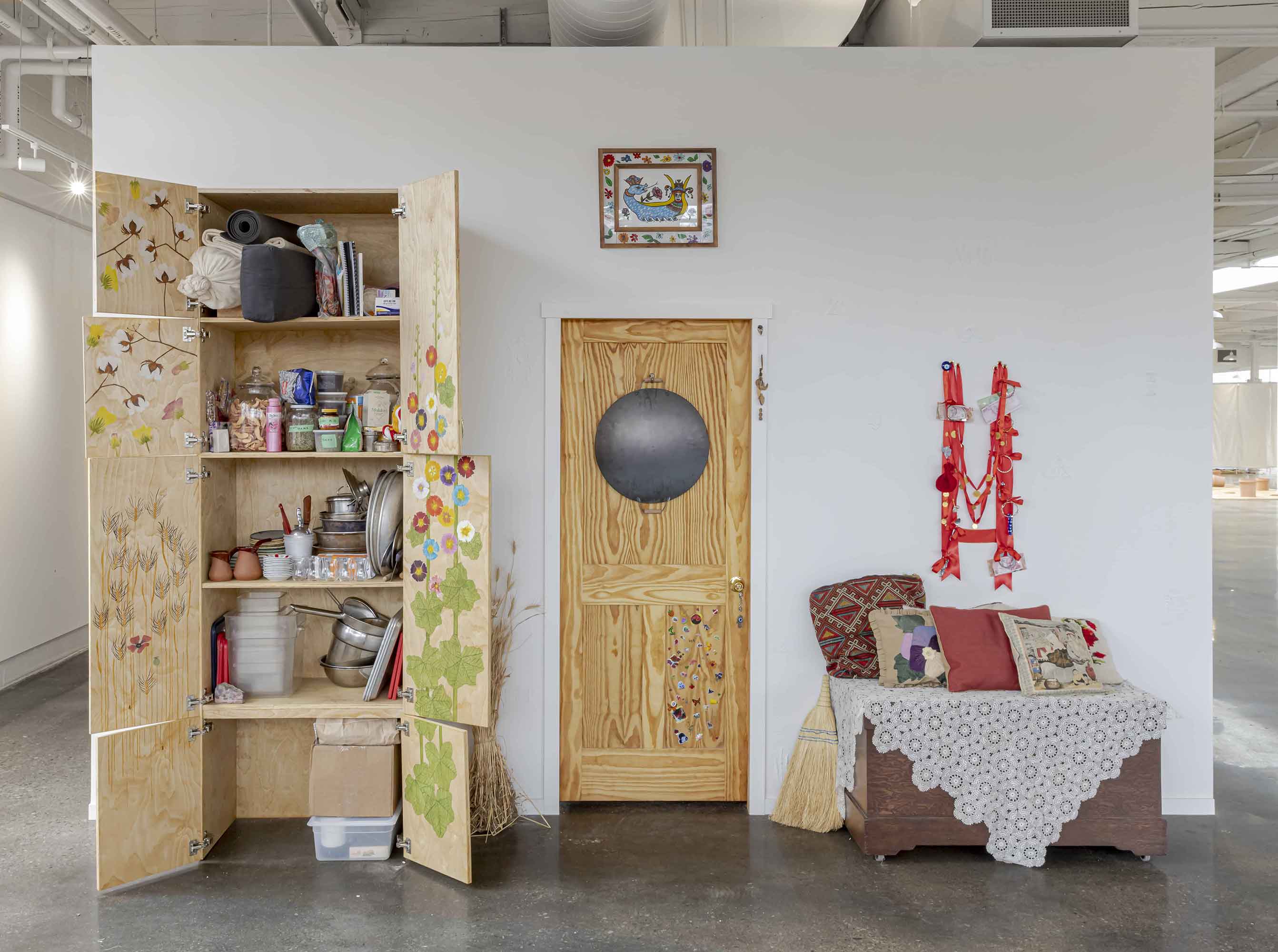
‘Queer Dowry’ by Turkish artist Derya Akay is a personal exploration of their ancestry, familial and geographic roots, personal relationships, queer histories and heirlooms, expecially textiles. Akay, who is a first generation Canadian settler, visited Adana in Turkey during the process of creating this installation. This resulted in the exploration of their material inheritance and the “dowry” practices prevalent in the region. The ‘Queer Dowry’ installation serves to question these inheritances and traditional practices outside the traditional conventions of binary genders and within queer communities.

‘Holdings’, an architectural installation by Nadia Belerique, is made out of industrially produced plastic barrels that are made to transport cargos across seas. These reusable barrels are often dotted with traces and imprints of the objects that they hold. Over extended periods of time, they begin to show layered marks on their inner surfaces. Belerique, whose family would often use these barrels to transport food and other items from Toronto to the archipelago of the Azores in Portugal, was inspired by looking at the marks and indentations on them. She realised that these imprints can serve as reminders of their potential to be used and reused. Her installation serves to prick a similar reaction from the viewers. Each barrel that makes up ‘Holdings’ comprises photographs and objects assembled together and preserved under lens-like stained-glass coverings.
Some of the other artists who will also showcase their work at the event include Abel Rodríguez, Buhlebezwe Siwani, Ghazaleh Avarzamani, Timothy Yanick Hunter, Ts̱ēmā Igharas and Waqas Khan.






 Sign in with email
Sign in with email



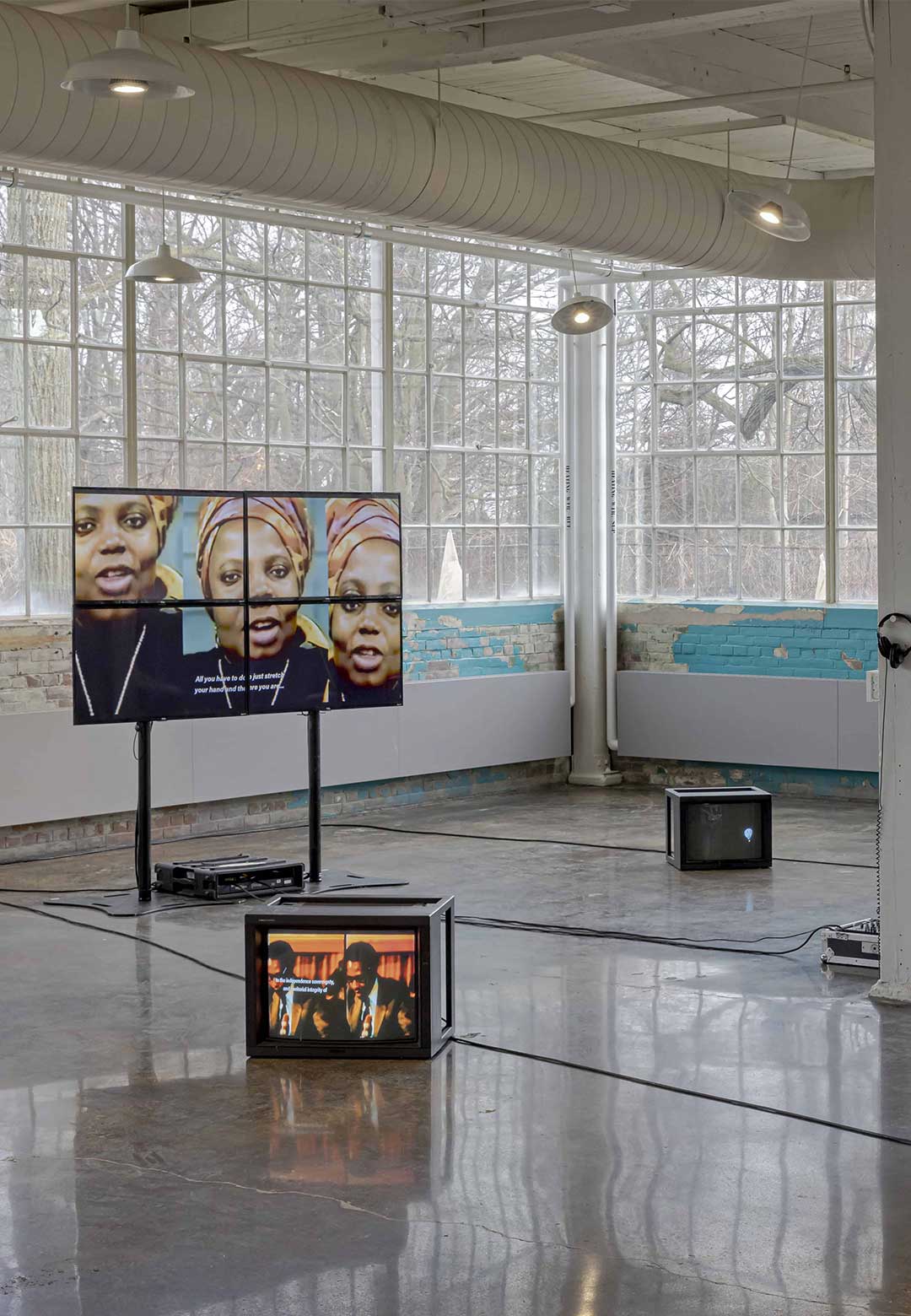




What do you think?